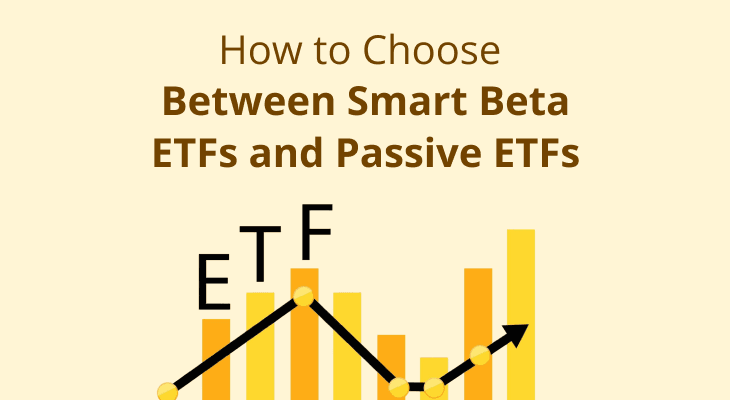
What is the Strangle Option Strategy?
Investors often wish to try different trading strategies but anticipate the worst outcomes and back out. However, if you are an enthusiastic trader who wishes to enter the world of futures and options trading, you could find yourself in lucrative positions if you study certain strategies like the strangle option strategy. This involves the buying and selling of both call and put options and aims to make the most of price shifts in either direction. Even if you are a novice in the world of trading, you can always read this article and try strategies with small amounts of capital till you gain a sufficient grasp of the method based on experience.
Strangle Option Meaning
In futures and options trading, strategies that traders apply are the key to turning the tide of the market and making trades work for potential profits. The strangle option strategy is one strategy that traders commonly apply on the trading floor. Investors can significantly benefit from the strategy if they manage to precisely predict whether a stock price will shift drastically or remain within a narrow price band.
In the strangle option strategy, the strategy aims to make profits based on forecasts concerning a stock’s price dramatically changing. The strangle option strategy represents buying or selling a call option when the contract’s strike price is higher than the spot (current) price of the stock in question. The buying or selling of a put option having a strike price lower than the spot price also constitutes a strangle option strategy.
How does the strangle option strategy work?
In the investing universe, futures and options, especially options trading, prove to be potentially profit-making investment opportunities that may present reduced risk depending on strategies used for investment. An investor or trader can employ the strangle strategy when they have a position in both a call option and a put option involving the same underlying asset or security in an options contract. The date of expiry of the options contract must be the same. Nonetheless, these options contracts have different strike prices.
As an investor using this technique, you can profit from swings in the price of the underlying security or asset, regardless of the direction in which they take place. The strangle strategy offers benefits to an investor who displays confidence in the probability of an extreme swing in the price of an asset or security without any care for the direction.
Terminology Associated with the Strangle Strategy
In futures and options trading, when the strangle strategy is used, there is specific terminology that a trader needs to understand. This is shown in the table below:
Terminology | Explanation |
| Put Option | The put option gives the investor the right (but not the obligation) to sell an underlying asset (a stock perhaps) at a specific predetermined price and on a set date. |
| Call Option | The call option gives an investor (the holder of the options contract) the right (but not the obligation) to buy an underlying asset or security at a pre-set date and at a pre-fixed price. |
| Spot Price | An options contract is related to the underlying security or asset’s current price. This is the spot price. |
| Strike Price | The price at which the investor purchases an options contract (determined by the value of the underlying security or asset) is the strike price. This is also the pre-fixed price of the underlying asset or security that is mentioned in the contract. |
| In-the-money Option | In futures and options trading, this occurs when the asset or security’s price becomes higher than the strike price. |
| Premium | This is a charge or fee to be paid by the investor to participate in futures and options contracts. |
| Out-of-the-money Option | This happens when the underlying asset or security’s price goes lower than the strike price mentioned in the contract. |
| At-the-money Option | This term is used to describe the time when the underlying security or asset’s price is the same as the strike price. |
Types of Strangles
In futures and options trading, you can use the strangle strategy, but you must be well-versed with the two types of strangle strategies, namely the long strangle and the short strangle. These are explained with examples below:
- Long Strangle : In this technique, investors or traders are permitted to profit from a significant return or a fall in the underlying asset or security’s price without needing to estimate the direction of the price movement. If investors use this tactic, they buy call options having strike prices that are higher than prices in the market and put options having strike prices that are less than prices in the market.
The investor could lose the capital spent on the options in case the stock price stays between both strike prices. Using the long strangle, investors may execute an action to buy a stock below the market price if the price of the stock surges above the call price. Investors can get stock at the market value and execute put options to sell it for a profit if the price of the stock goes below the strike price as mandated by the put option.
Consider an example of the long strangle approach: An investor purchases a call option with a strike price of 55 and a put option having a strike price of 45, and fixes a long strangle approach on a stock, currently trading at 50. In case there is an increase in the price, the profit made will be calculated thus:
(100x[market value-55]) - (call price + put price)
In case the price drops, the investor’s profit will be calculated in the following manner:
(100x[45-market value]) - (call price + put price)
Finally, in the event the price remains between 45 and 55, the investor will have to forego the capital invested.
- Short Strangle: Within the strangle option strategy, the short strangle may be used as an approach to achieving trading goals. Here, this tactic is employed when the price of the underlying security (say, a stock) does not fluctuate significantly. In a short strangle, investors will likely sell call options having strike prices that are higher than the present market stock price and put options having strike prices that are less than the present market stock value. The investor can make gains if the price of the stock remains between the strike prices. In case the price veers out of this range, investors stand to lose the capital invested. If the difference between the strike prices is lower, then the profits are larger.
The short strangle may be explained by an example: An investor may sell a call option at 55 and a put option at 45 and fix a short strangle on a particular stock. Here, the investor is able to keep the premium that is generated from selling options in case the price remains in that specific range.
In case of a price drop under 45, the investor will likely lose out according to the following calculation:
(call price+put price) - (100x[45-market value])
If the price goes above 55, the investor will make the following loss:
(call price+put price) - (100x[market value-55)
Benefits of Using the Strangle Option
Before getting a foot into futures and options trading strategies, investors must do enough research so that they are in full knowledge of their trading outcomes and can trade effectively. One of the things investors should learn about is the advantages of using strategies, in this case, the strangle option strategy. Here are the benefits of using this strategy:
- Investors must understand that the higher the returns from exercising call or put options, the more the chance of an increase or a fall in the price of the security. Additionally, as the price of the stock fails to have an upper limit, the potential return you get from the call option fails to have a limit too.
- In futures and options, if you use the strangle option method in your trades, you can exit trades by reselling your options in case you are not confident of the stock price changing sufficiently before the expiry date. You may also do this if you want to lock in your gains.
- The losses incurred are limited to the sum disbursed for getting into the contract. With the strangle, you get a blend of restricted risk and gains that are infinite.
Conclusion
Futures and options may be explored as trading and investment options after you have understood what they entail thoroughly. As with any trading strategy you employ, the strangle strategy requires enough experience and practice before its fruits can be fully realised by investors. Nonetheless, strategies like the strangle potentially help investors reach their goals, but they must be executed with extreme care and knowledge of the market.
FAQ
What is the selling strangle option?
In options trading, the strangle strategy allows you to buy (sell) a call that is out-of-the-money and a put with the same date of expiry and the same underlying security or asset.
What is the formula for a short strangle?
The formula for determining the working of the short strangle is the strike price of the put minus the received premium amount.
What are the risks of the strangle option?
The strangle strategy employs out-of-the-money options, so there is a higher risk while employing this strategy, relative to other trading techniques. In this options strategy, the decay of time is a negative factor that affects profitability.
When is a strangle useful?
The strangle method is useful if the trader or investor believes that the stock (the underlying asset) will likely move in a single direction (either way) and wishes to be safeguarded.


